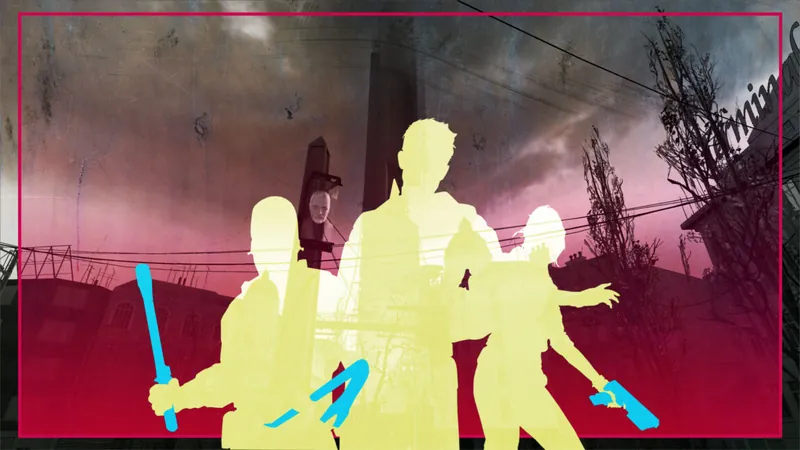
The Lasting Impact of Half-Life 2: How Valve Redefined Gaming Standards
2024-11-13
Author: Ying
The Lasting Impact of Half-Life 2: How Valve Redefined Gaming Standards
As we commemorate the 20th anniversary of the groundbreaking game *Half-Life 2*, released on November 16, 2004, it's clear that its influence on the gaming industry is still palpable. *Half-Life 2* didn’t just push technological boundaries; it set a high bar for artistic and narrative excellence in video games, redefining player expectations for over a decade.
The Origin of a Game-Changer
When discussing which title falls under the "first modern triple-A game," *Half-Life 2* frequently tops the list. It revolutionized Western PC gaming, not necessarily by inventing new mechanics but by mastering the integration of scope, scale, and polish. Valve’s innovative development strategies paved the way for future titles, influencing game studios worldwide.
Valve's Unique Development Culture
Valve’s distinctive team structure played a vital role in the creation of *Half-Life 2*. Unlike many studios that operate in strictly divided departments, Valve employed small, cross-disciplinary groups known as "cabals." These teams collaborated on chapters of the game, fostering creativity through shared feedback and iterative design processes. This openness resulted in a unified yet diverse gaming experience, as ideas flowed across different teams.
Another cornerstone of Valve's philosophy was their commitment to rigorous playtesting. While the concept of playtesting was not new, Valve refined it by interacting with real players in public spaces. This allowed the team to observe authentic gameplay interactions, understanding what worked and what didn’t, and responding with iterative improvements.
Alpha Testing and Iterative Refinement
The development team was meticulous about iteration, making a considerable investment in creating a polished alpha version of the game. Valve suggested a timeline for other developers that prioritized getting to the alpha stage within eight months, allowing for four additional months focused on refining the player experience. This level of dedication paid off, ensuring *Half-Life 2* offered a smooth gameplay experience that resonated well with players.
Valve's innovative approach to in-game cutscenes also left a significant mark on gaming. By blending level design with narrative, the team created dynamic scenes where character interactions could happen while players explored their environments. This methodology ensured that gameplay was continually engaging and immersive.
Influence on Future Game Development
When *Half-Life 2* launched, it was celebrated not only for its memorable story but also for how the game mechanics—and particularly the iconic Gravity Gun—reinvented player interaction with the game world. The Gravity Gun's physics-based gameplay has since inspired numerous titles, with modern games like *The Legend of Zelda: Tears of the Kingdom* showcasing similar mechanics that allow for creative freedom in gameplay.
Environmental storytelling was another aspect that *Half-Life 2* excelled at. Players were guided through the game world by intuitive cues rather than blatant markers, setting a standard for narrative-driven design that many developers still aspire to today.
Legacy and Forward Thinking
As we look back on twenty years since its release, *Half-Life 2* is often remembered not for any singular revolutionary gameplay mechanic but for its impeccable execution. It taught the gaming community vital lessons that remain relevant, including the importance of cohesive storytelling, detailed world-building, and engaging game environments.
Moreover, *Half-Life 2* made significant contributions to digital distribution through the launch of the Steam platform, changing how games are delivered and monetized. Its impact is felt even now as the industry continues to evolve.
In summary, Valve's *Half-Life 2* didn’t just deliver an impressive gaming experience; it crafted a legacy that resonates in contemporary game development. As we approach this anniversary, it's clear that both the technical and narrative innovations introduced by *Half-Life 2* continue to shape the future of gaming. What will we discover next as we reflect on this milestone and look ahead to the future of interactive entertainment?



 Brasil (PT)
Brasil (PT)
 Canada (EN)
Canada (EN)
 Chile (ES)
Chile (ES)
 España (ES)
España (ES)
 France (FR)
France (FR)
 Hong Kong (EN)
Hong Kong (EN)
 Italia (IT)
Italia (IT)
 日本 (JA)
日本 (JA)
 Magyarország (HU)
Magyarország (HU)
 Norge (NO)
Norge (NO)
 Polska (PL)
Polska (PL)
 Schweiz (DE)
Schweiz (DE)
 Singapore (EN)
Singapore (EN)
 Sverige (SV)
Sverige (SV)
 Suomi (FI)
Suomi (FI)
 Türkiye (TR)
Türkiye (TR)